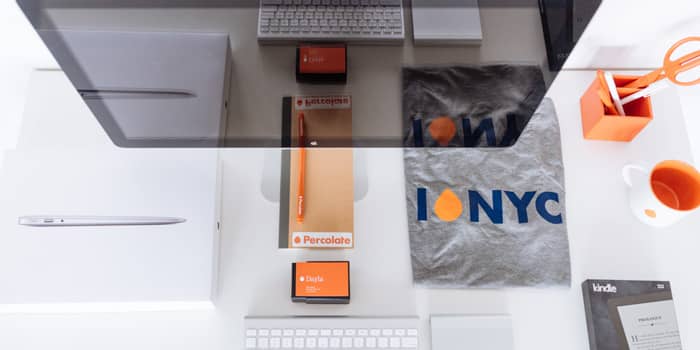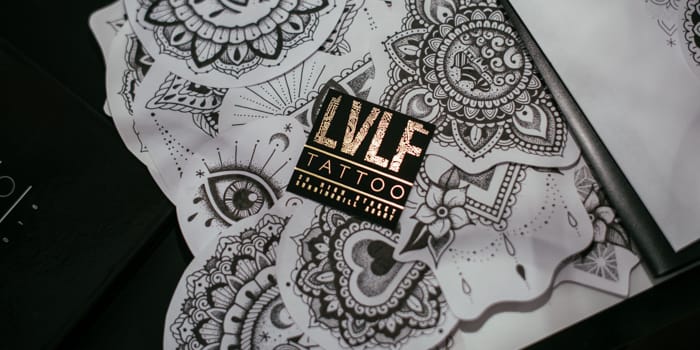How to scale your values along with your startup

As your startup grows, things start to change. Sure, making money and adding people is great fun, but when the office begins to get overcrowded, the culture that made you successful starts to drift. As a founder, it’s up to you to actively defend this founding culture as it’s the key to your future success. Here’s how to maintain your core values as you scale:
1. Post those values everywhere
Keep that fire going and write down your brand’s values. It’s just like branding, but internal. Print them out onto flyers and place them everywhere around the office. There’s a reason that Fortune 500 companies do this—they allow everyone to connect around something shared.
Also, encourage a vibrant startup culture that carries those values through inside jokes and artifacts. These are the objects that defined the company when it was small, like the first conference table, or that weird potted plant that somehow didn’t die. As you grow, they’re a constant physical reminder of where you came from and what you stand for.
And finally, as a startup founder, never stop sharing those values. Companies like Percolate, a software firm that grew from 27 employees to 100 in just under two years, still begins their employee onboarding with the story of why their founders built the business.

2. Always stay transparent
Share everything. It’s the key to keeping employees engaged which, according to Chris Zook, author of The Founders Mentality, writing in the Harvard Business Review, makes them 3.5 times more likely to solve problems.
As you grow, proactively overshare – make sure that the team is all privy to things like sales numbers, growth, plans, objectives, big events coming up, you name it. Make it a habit of printing out and posting company news on official letterhead in public places, and keep those all-hands meetings going – you can never outgrow them.
Transparency is also a two-way street: anonymous feedback boxes in the office can keep you keyed into how employees are dealing with the growth.
3. Strengthen those bonds with collaboration
Create cross-team meetings and updates that don’t normally exist and find reasons for them to collaborate. For example, put sales and marketing on projects together. Give the product team time with finance to plan budgets. This keeps everyone talking and that culture consistent. And don’t forget to encourage extracurricular activities that have no business purpose other than to bring people together. Sam Hodges, co-founder of Funding Circle, a startup that grew from 25 to 95 employees within 12 months, credits much of their team spirit to volunteer groups like their rooftop garden club.
4. Keep that first-customer focus
Have you ever been to a small restaurant and seen a framed five-dollar bill on the wall? That sort of first-purchase pride is exactly what you felt when you landed customer number one. You cared for them like nobody’s business because frankly, they were all of your business. As you grow, maintain that feeling.
As founder, stay highly involved in customer success. That both means sending hand-written thank you cards to customers and making sure that your customer success team feels that “first-customer” feeling. Give them individual territories or accounts so that they feel accountable (no pun intended) to each contact and treat them with the same level of care that your first customer received.
5. Brand consistency is key
Having beautifully branded print materials not only keeps people abreast of what’s happening but it also gives the impression that your brand is cohesive. When you use consistent company letterhead to announce events new marketing messaging, you rally everyone together around your common cultural cause. And when that team goes out into the world and hands bespoke business cards to clients, you’re practically shouting about your unified culture from the rooftops.
Growing means changing, but you don’t have to let it negatively impact your culture. By championing the values that got you started, you can keep all the parts of your business fused together in a living, functioning, community as you scale.
Our MOO community is creative, crafty and beautifully brilliant. Every day, we’re inspired by people all over the world who’ve built a brand from their own creativity and we hope you will be too.
Here are 3 beautiful brands we love who specialise in making beautiful things for the home – each was kind enough to share the story behind their businesses and stunning designs.
HamaManiac

Asya and Ata’s brand, HamaManiac: Anatolian Artisan Craftwork, is inspired by their Turkish background. Their lush Hamam-inspired towels come from a place of vitality, warmth and tradition. Based in Southwest Germany, this brand-new craft company celebrate their culture, bringing this traditional artform to a new generation of admirers.
They explained: “We began our startup in November 2016 – so in a manner of speaking we are newly hatched. We love our Hamam-towels: their colors, their patterns, their craftwork and their many uses. These towels are actually called Pestemal. They’re exclusively handwoven, 100% cotton and originate in the traditional Anatolian bathing culture. The smooth silky feeling makes you want to cling on it.”
“We wanted to make sure this idea would find its way to our cards: that’s why we picked Super paper, which perfectly represents the solidness yet remarkably lightweight comfort and smooth feeling. In addition to this, the Gold Foil element highlights our Pestemals’ simplicity, classiness and minimalist style. As cotton is the primary component of our Hamam-Towels – no surprise – it also became the logo of our label. The cotton flower in its gold print on our blank white card accentuates this simple, but precious basic material. So, our cards are a tactile representation of our label – we love them!”
KairosLab
Martina Musetti’s brand, KairosLab, takes the warmth and tactility of ceramics and articulates it through elegant jewellery and homeware – and we love it. Based in Italy, she draws inspiration from nature to create earrings, vases and other small objects. All of them welcoming, calm and beautiful.
Martina told us: “My creations are simple and modern, I interpret nature in a modern way, to give to my jewelry and my ceramics an original and unique design. Following this idea, me and my Graphic Designer, Elisa D’Anna, created a style in line with my creations. We wanted to give an idea of lightness of form.”
To help promote her work, Martina picked our MiniCards and Stickers. She said: “I love the matte finish of the mini card, they are almost velvety to the touch, and the thickness of the paper makes them resistant and durable. I love the shape too – they are original and funny, inspiring curiosity immediately in those who receive them. And the round stickers are perfect for my logo! When I take my work to markets, I leave the cards on the table. People always like to take them, they appreciate the velvety touch and original shape.”
Galyean Vail
Barbara Vail’s Boston-based interior-design business, Galyean Vail specialises in bringing new life to vintage furniture and furnishings. Growing up with an auctioneer father, she’s built a business based on finding the elegance and beauty hidden within an older object’s own story. It’s her belief that pieces don’t just take up physical space, but that they mean something because of where they were found, when they were found, or whom they were passed down from. It’s working with clients to uncover these stories and in doing so, find the right objects for them, that drives her today.
She told us what inspires her: “I grew up going to antique markets and working at the auction house, which instilled a love for design and vintage pieces that tell stories. I typically work with clients that have an eclectic style and really want their personalities to shine through. The images on my MOO cards reflect just that, whether I incorporate a vintage beach painting from Brimfield Antique Market or a handmade table lamp from Portland, Oregon.”
“I love that each card is different and showcases a variety of design styles in my work. I get excited to share my business cards and give a little story about the image on the back. Plus I don’t think enough images are actually printed these days! Everyone has loved that each card is like receiving a little piece of art.”
Running a business is one of the most exciting things you’ll ever do. You get to make money doing something you’re passionate about, while having full control over your work schedule — the amount of freedom can be a little addictive, and very inspiring.
So inspiring, in fact, that it can be difficult to remember to take care of yourself. When everything from marketing to product creation is on your plate, you can find yourself more stressed than you should be – and too overwhelmed to do something about it.
That’s why it’s important to build smart work habits that not only help you work more efficiently, but ensure you look after your wellbeing – which in turn gives you the energy and creativity to push your business even further.
Instead of doing more, review your goals
Tara Gentile, a small business consultant and strategist, notes that a common problem for busy entrepreneurs is trying to grow their business by doing more of the same – “more work, more offers, more email subscribers, more marketing.” But when you’re only focused on doing more, it’s inevitable that you’ll eventually reach the point where you have more tasks than you will time to do them.
Instead, set bigger goals that help you keep focused on the major steps for your business to level up. “It might mean taking a risk and hiring a team member, or cutting one product and going all in on the other,” she says. “But, however you approach it, it’s going to mean doing things differently. Doing things differently will get you out of the burnout cycle and on to growing your business.”
Price yourself right
As an entrepreneur or freelancer, you may be at your desk 40 hours a week – but not all of them will be billable towards your target income. When calculating your hourly rate for clients:
- Factor in that between 25-50% of your time will be spent on marketing your business, talking to potential customers and doing admin.
- Remember to account for the costs of running your own show. For example, you might base your hourly rate off an employee salary, then increase it by a factor of 1.5-3x to cover taxes, healthcare, and business expenses.
- Review your rates periodically. Don’t forget to benchmark against others in the industry – and your own productivity – to make sure you’re being fair on yourself. Depending how fast your skill-set is growing, a good rule of thumb is to up your fees when you’re booked out for a month or two.
Be realistic about productivity
Especially when you’re starting out, you may find it difficult to clock how long one specific part of a project will take. Underestimating your time spent in your business can mean under-pricing your services – and when you aren’t making enough money, it’s hard to convince yourself to take a break!
Start tracking your time so that you have concrete numbers to create estimates for services or projects – this is less labour-intensive than you might think. There are tons of apps that make it easy to do from anywhere – trial a couple until you find one you like.
It’s a good idea to pad your time estimates too — consider multiplying your expected time taken by 1.5 to account for revision requests from the client or unexpected delays in communication.
Get organized
Staying organized can do wonders for your peace of mind as an entrepreneur. Creating a workflow that works for you is a highly personal process, but these tools can help:
Evernote is great for storing documents and your notes to self, as well as bookmarking inspiration for new projects. And the phone app comes with a scanner – no more losing notes, receipts, business cards, or invoices!
To keep track of your to-do list: Asana and ClickUp are great if you’re more of a linear thinker, or if you want a more visual way to manage your projects, try MeisterTask, Trello or Asana’s new board option.
Organizing your cashflow and invoicing can remove a lot of stress, too – Quickbooks and Xero are accounting apps for small business owners, while Harvest and Freshbooks additionally have time-tracking and easy payment tools built in.
Make time for yourself
Todd Henry, business author and speaker, says one of the biggest mistakes entrepreneurs make is letting business take over their lives. “Make sure you’re taking time on a regular basis to fill your mind with inspiring stimuli and ideas,” he says. Whether that’s checking out art exhibitions or settling in with a new Danish noir TV show, it’ll help you stay fresh and generate great ideas.
An underrated favorite is to try a series of podcasts and audiobooks. There are so many great ones to choose from, whether you’re into surreal audio dramas or non-fiction narratives about design – and they can be “read” while you’re cooking, walking the dog, cleaning the house, or in the car.
Want to make your work time more productive? Try these tips
Graphic design, illustration and a meticulous attention to detail make Lucy Frost a formidable artist and business owner. We met her to find out how she’s forging her own path and how she brings her individual style to her commissions – and her brand.
Leafy Ascot, an hour outside London, is known around the world for its racecourse. But today, it’s also home to a tattoo studio, LVLF, run by a young, ambitious artist: Lucy Frost. For most in the industry, the usual career path follows a well-trodden route, working in a series of studios before starting your own.
Not so for Lucy – after a year as an apprentice working under the famed artist Dan Gold, she launched her own studio, with a brand and feel that’s firmly her own.
How did you get into tattooing?
My background’s in graphic design, originally. While I was at college, I interned at (London superclub) Fabric, then worked at Peterborough Speedway for 5 years, creating their branding and programs.
It wasn’t until later when I was traveling round Guatemala that I came to tattooing. I met some people I really got on with, so went back to live in a tattoo studio with some local guys. As I was constantly drawing, they offered to teach me how to tattoo. When I moved back to London, I must have emailed over a hundred shops to find an apprentice role. I was offered 3, and went with Dan Gold.
At first, working in tattooing was really nerve-wracking – you’re constantly thinking about how you can’t make a mistake! But, like anything else, over time I got used to it. After about a year, I was looking for a new position. I’d also decided to leave London, and this place popped up for rent. It just seemed like the right thing to do – everything flowed really naturally and felt right. I’ve always been really ambitious – my parents run their own business too so it’s in the family.
Your style is beautifully intricate – how did it develop, and how do you tailor it for each client?
I come from a graphic design background and I think you can see that in my work. I’m really precise and a massive perfectionist. It’s all my original artwork, I think you could look at all my work and know it’s mine.
I see every client for a consultation. If they’re local they pop in, but if not we talk online. I think it’s really hard to convey what you want creatively, in an email or a message, so I prefer to talk to people. We go through the feel of the piece and share reference images to help develop the design. Some people want heavy and bold, some people light and intricate, some organic. I also take a tracing of the area where they want to place the piece so I know how big it’s going to be. Next I’ll sketch the design, then finally take it into Adobe Illustrator, where I’ll draw the template.
Alongside your tattoo work, by starting your own business you’re also building a brand. How did you design your tattoo shop’s branding?
I did all the branding myself. With my tattoos, a lot of my inspiration comes from the natural environment, as well as the art that inspired me whilst I was travelling. I carried that through. I really loved the gold foil printing at MOO, and was immediately set on it. For my cards, I created the designs in Illustrator and uploaded as final pieces. A business card is the first thing somebody sees of my business, and MOO’s quality is second to none.
At the moment, most of my promotion is through social media and my website. I was planning on flyering around the local area, but so far I’ve been busy enough to not need to yet. A lot of work comes from Facebook and Instagram, as well as word of mouth. I end up tattooing whole groups of friends, as well as people I met travelling when they’re in the UK.
I haven’t been in the area too long, so I’d say probably only around 25% of my work is local at the moment. The rest of my clients come from all over. I’m working with a client at the moment who comes over from Paris, and a lot of clients come from London and my old studio. They moved with me. Every piece is different, every person’s different but all my work is uniquely my own.
A lot of people would be nervous about following your path and launching their own business so soon – do you have any words of advice for them?
Just go for it. Don’t be scared. If you’ve got something you’re good at, and people want to work with with you then take the leap and go for it. It’s so much better working for yourself, and seeing your own profits. You’ve got to invest at first, which is where a lot of people get scared, but it’s worth it. I’m excited about everything coming up, because I just love what I do.
Inspired by the tattoo shop’s branding? Sparkle like LVLF: get your own Gold Foil Business Cards
How can you make heritage skills relevant for a modern market? Ed Neale, founder of Brazilian tailoring brand Reunidas, is putting a new twist on luxury.
When launching a business, brand positioning is one of the most exciting parts of the journey. What do you align yourself with – and where’s the most comfortable fit for your products? More and more, entrepreneurs are finding that the story their products tell is as important as the products themselves. And for Ed Neale, MOO customer and founder of luxury fashion brand Reunidas, his story is one that demands rapt attention.
Reunidas describes itself as ‘rediscovering Brazilian tailoring’. And Brazil’s role in creating high-end, tailored shirts like those Ed’s in the process of introducing to the rest of the world, is a fascinating one. We caught up with Ed to find out more about his business, his background and ‘Brand Brazil’.
How did your journey take you to Brazil?
I was fascinated by Brazil. I knew there was a lot of interesting history. I knew it was an interesting country, and so aged 25 I decided to roll the dice and move to a small town in the south near Uruguay, where I enrolled at university to learn Portuguese. I always had this curiosity about why ‘Brand Brazil’ was so narrow. Why is this huge, fascinating place just about the beach and Samba?
Straight away, I remember looking at the opportunities. In Brazil, there are a lot of people importing stuff from abroad, but I very quickly started to see all these other skills that weren’t talked about or championed. I started my own business to try and champion those things at a higher level.
The mid-century aesthetic is a strong part of your brand – where did that come from?
In the story of Brazilian tailoring, the 1950s was the golden age – they’d refined their craft and it had become unique. It was a kind of glamorous time – Sao Paulo and Rio were glamorous places.
Brazil’s a large country with huge Italian and Japanese migrant communities, who contributed to this craft. This led to a fusion in design which is very on-trend – an aesthetic that’s extremely coveted right now. The younger generation who are more aware are using this old branding in bars, coffee shops and restaurants in downtown Sao Paulo.
There’s a word in Portuguese that means ‘cannibalisation’ – in design they say that the Brazilian style cannibalised the old world and out came this beautiful style of design, tailoring and furniture.
You see it in furniture too – it’s the Brazilian style of curves, of being relaxed. You start to see that being applied to tailoring. They removed the old world’s very rigid structure. We’ve moved away from this structure to make something that’s more relaxed – the yoke at the back is curved to make our shirts more comfortable. The collar is an appropriation of the classic Brazilian collar. It has a curve to it – it follows the natural line. The button is lowered so when you wear it without a tie, it looks better. It’s the traditional but adapted. Little tweaks, little twists that make it uniquely Brazilian, but still familiar.
When it comes to reaching the right audience, how do you find the right brands to collaborate with?
You’re at a starting point where it’s very positive. People want to visit Brazil, or they’ve been. But then it’s about the education – people do want to understand more about what Brand Brazil is all about.
When you talk to people about Brazilian fashion, they’re used to one thing – beachwear. I used to spend a lot of time banging my head against the wall with fashion brands but actually, the story is starting to make a lot more sense when you come at it through the design angle. The collaborations I’m doing now – events with furniture, with art – are like explanations. People get it straight away. As soon as you put the tailoring next to this wonderful mid-century furniture, the backgrounds and stories are the same.
So I’m working with Frescobol Carioca, who are high-end fashion but more casual, more beachy – because of course that’s still relevant. It’s a conduit to explain the heritage. It’s starting to become cool again. It’s about putting all of these things together and trying to educate people about the history. I love giving lectures about the history – but the product’s got to be good too.
Why do you think the time is right for new countries to move into the luxury space?
I believe that over the next 50 years we’re going to see a lot more brands coming from developing countries. And I think they’re also going to be able to compete at a luxury level as well as a consumer level. The product is improving, the story is improving and history tells us that this is definitely going to happen in luxury goods too.
I refuse to believe in 50 years we’ll be buying the same Italian brands. There will be space, however big or small it is, for new countries to emerge in this market and in my case Brazil has a very interesting proposition. It’s a positive one, it has a lot of raw materials and a lot of history. And importantly for a Western consumer, you’ve got essentially crafts and culture that people are already familiar with and covet – like Italian and Japanese – but all with a twist. It’s old world colliding with new world.
Get your own piece of Brazilian tailoring history at Reunidas



















